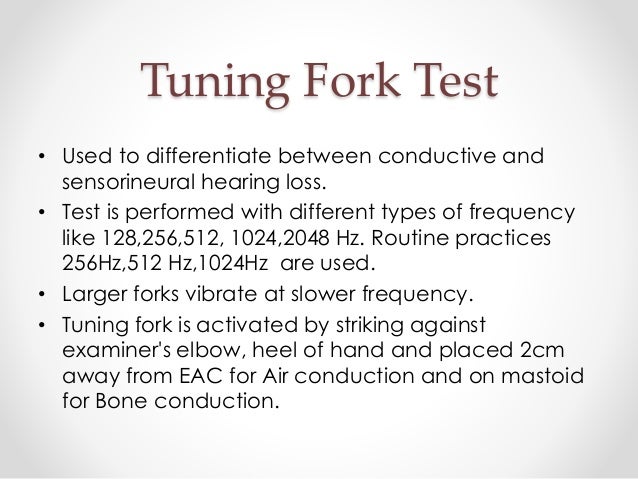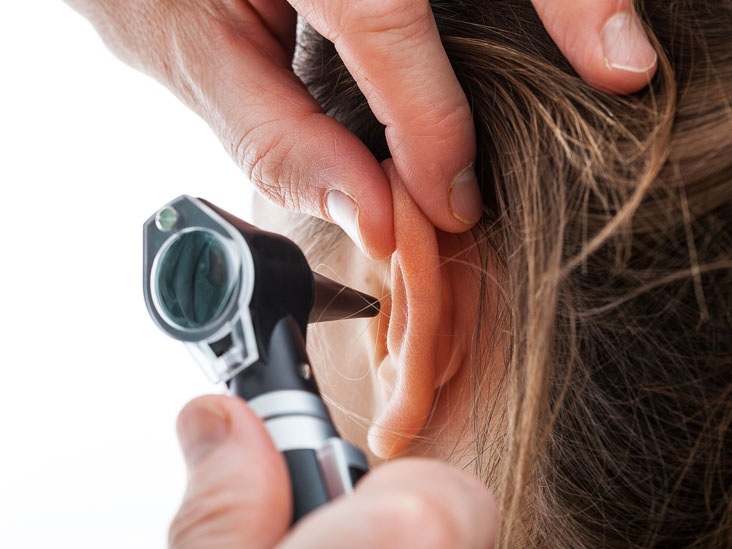All videos on. Then the doctor moves the tuning fork next to your ear canal.
How to use tuning fork.
How to use a tuning fork to test hearing.
Tuning fork parts of a tuning fork.
Hold the stem of the tuning fork between the index finger and thumb of your right hand without touching the prongs.
The patient is then asked to identify which ear hears the sound created by the vibrations.
Strike the junction of superior 13 and inferior 23 of the prongs area of maximum vibration on a rubber pad or elbow.
Conditions for ideal tuning fork test.
For this test the stem or handle of the vibrating tuning fork is placed at various points along the midline of the skull and face.
The tuning fork is activated by striking against the examiners elbow the heel of the hand and placed 2 cm away from eac for air conduction and on mastoid for bone conduction.
A demonstration of how to perform a crude hearing test aswell as rinnes and webers hearing tests using a tuning fork.
This video produced by students at oxford university medical school in conjunction with the ent faculty demonstrates how to perform tuning fork examinations for hearing loss.
It is good to use a tuning fork which vibrates at a certain frequency.
Professional uses fork made from good alloy.
A second hearing test using a tuning fork is the weber test.
The doctor strikes a tuning fork and places it on the mastoid bone behind one ear.
When you can no longer hear the sound you signal to the doctor.
When you can no longer hear that sound you once again signal the doctor.
These tests can help detect conductive or sensorineural deafness.


















No comments:
Post a Comment